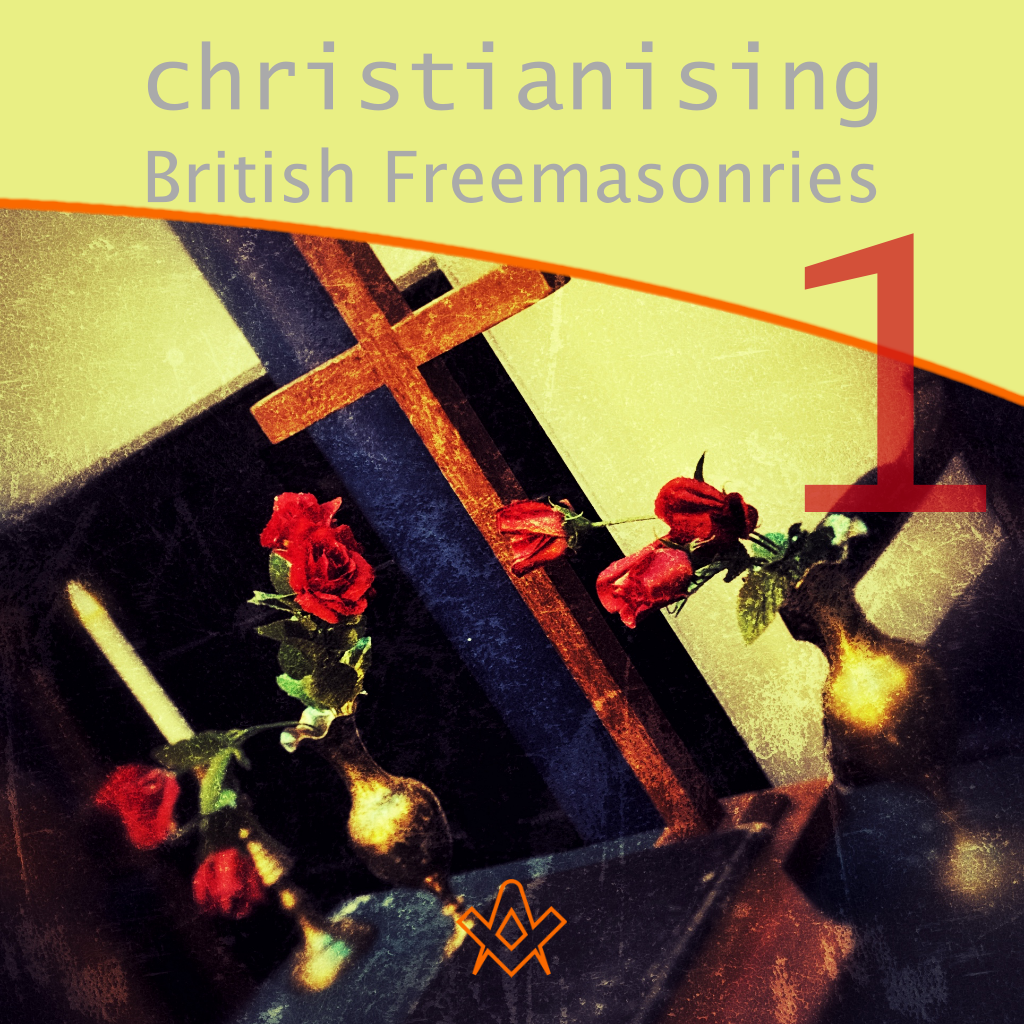During the terrible years 1939-45 many ecclesiastics and masons were united in their ideals, sometimes in their martyrdom.
To return simply to a hostile status quo seemed to them impossible, immoral.
It is really from that period that we can date this sincere effort on both sides to draw up the balance sheet of the causes of misunderstanding, and, without rushing things, at least to study in common a common difficulty.
– Alec Mellor, Our Separated Brethren, the Freemasons.
This four-part series considers;
(i) the separation of British Freemasonries from the Grand Orient of France (GOdF); and,
(ii) maintaining fraternity with the Prussian Grand Lodge of the Three Globes.
Both decisions impact on the relationship of Freemasonries with religion, both in their different ways can be understood as battles for the soul (“essence”, Carnarvon) of Freemasonry.
However, Freemasonries and religions, are ‘by schisms rent asunder’ – a failure to agree on fundamental principles.
Perhaps the defining characteristic of our species is that we learn and believe through the medium of stories, narratives, fictions and fabrications.
Belief in the same story creates trust among the believers; this has provided the basis for widescale human cooperation.
How might the battle for the souls of Freemasonries be identified in a way that ensures thriving in the 21st Century?
There is no guarantee of the immortality of the soul of Freemasonry! ‘We study the past in order to free ourselves from it.’ – Hariri
Part 1. French Infidelity: A New Covenant
Part 2. German Fidelity: ‘For if the trumpet gives an uncertain sound, who shall prepare himself to the battle’?
Part 3. French Perdition: ‘…for what fellowship hath righteousness with unrighteousness’? What fellowship hath righteousness with self-righteousness?
Part 4. The 1877-8 arrival of Post Truth: ‘…. new heavens and a new earth…the former shall not be remembered’.
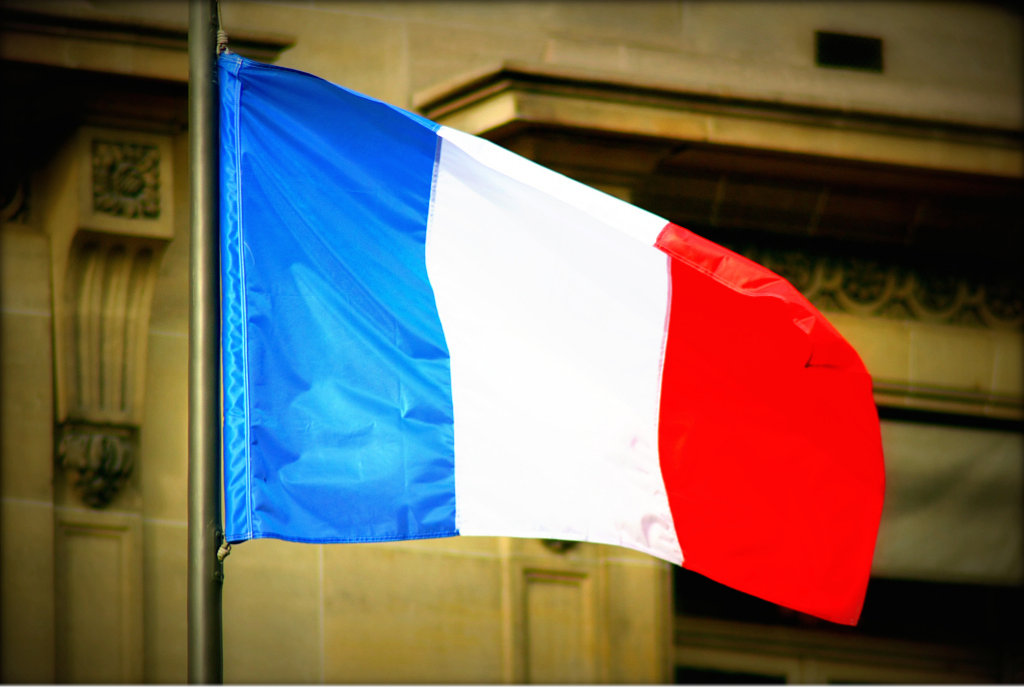
Liberté, Egalité, Fraternité
IMAGE LINKED: Chris – flickr Attribution 4.0 International (CC BY 4.0)
French Infidelity: A New Covenant.
Some of those fleeing the 1848 French Revolution sought safety and protection in Britain.
These émigrés included Freemasons from different jurisdictions with different understandings of what might be considered as, ‘the aims and relationships of the Craft’.
The French masonic mindset of Liberté, égalité, fraternité; and, liberte de conscience was very different from British, ‘Brotherly Love, Relief and Truth’.
English Freemasonry at the time of the 1723 Book of Constitutions was Whig and deist; by 1877 it was on the center of masonic support for contractual (covenantal/constitutional) monarchy, aristocracy and the Church of England: the GOdF was not on the center of anything like it!
As not many of the émigré masons were assimilated into English Freemasonry, they formed their own lodges/jurisdictions; it took some time for their ‘regularity’ to be assessed.
(For an insight into this, see Andrew Prescott, The Cause of Humanity’: Charles Bradlaugh and Freemasonry.)
French defeat in the 1870-2 Franco-Prussian wars terminated the rule of Napoleon III; the Third Republic commenced; Monarchists, the Catholic Church and the Military were unable to prevent a growth of secularization.
Republicanism was deemed, ‘the form of government that divides France least’.
Relations between Britain and the Third Republic were calm; on acquiring 44% of the shares in 1875, Britain secured joint ownership with France of the Suez Canal Company.
Thereby, it gained an ownership and control of a short cut to its Eastern Empire: in 1877, Victoria became Empress of India – the ‘Orient’ of the Empire.
The ‘French issue’ pertains to one jurisdiction, the Grand Orient de France (GOdF). In 1849, its Constitution read;
‘Freemasonry, an essentially philanthropic, philosophical and progressive institution, is based on;
(i) the existence of God,
(ii) the immortality of the soul
Its objective is the exercise of charity, the study of universal morality, of sciences and the arts, as well as the practice of all virtues.
Its motto is, ‘Liberty, Equality and Fraternity’.
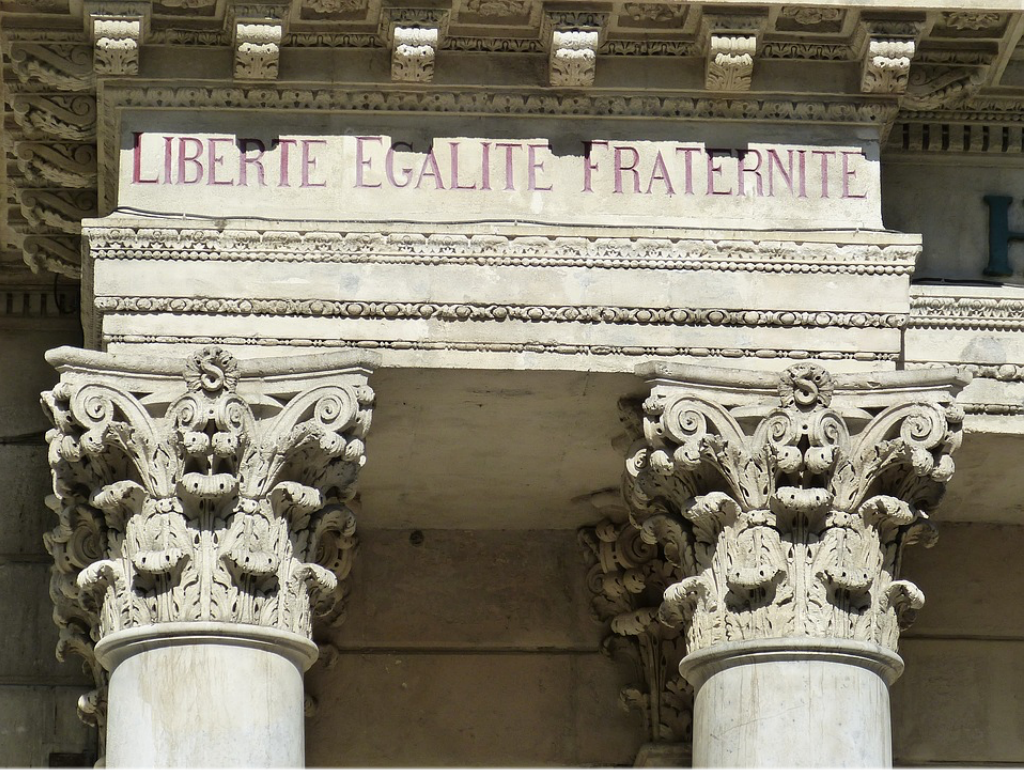
Falco – Liberté, Egalité, Fraternité
IMAGE LINKED: pixabay Attribution 4.0 International (CC BY 4.0)
In 1865 was added, ‘It regards liberty of conscience as a right which belongs to every man and excludes no one for his beliefs.’ ‘Liberty of conscience’ can be understood as including;
(a) the right to have a religion;
(b) the right to change one’s religion;
(c) the right to have no religion.
This definition is enshrined in the United Nations Declaration of Human Rights and in the British 2010 Equalities Act.
For the GOdF, liberte de conscience superseded the necessity to believe in either; (i) the existence of God; or (ii) the immortality of the soul.
In light of this, there were pressures for clarification. As led by the President (‘Grand Master’) of the GOdF, Revd Desmons; Motion IX was approved at the General Assembly, September 1877 and the Constitution revised.
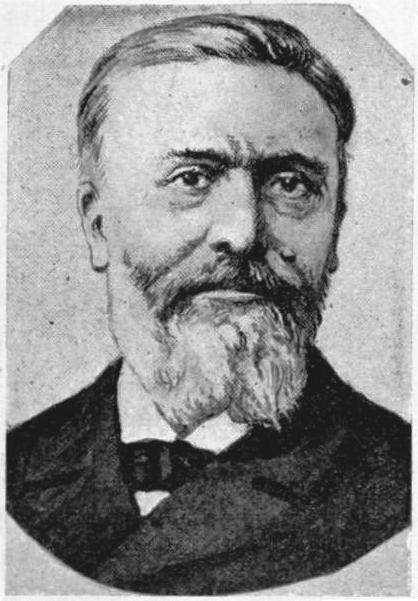
Frédéric Desmons DD, a pastor in the Reformed Church of France
IMAGE LINKED: wikimedia Attribution 4.0 International (CC BY 4.0)
Frédéric Desmons DD, a pastor in the Reformed Church of France, gained his theology doctorate in Geneva.
This was the birthplace of Calvin’s Republic whose Institution de la religion chrestienne advocated republicanism and the separation of the ‘two kingdoms’ of church and state.
That is to say, no established church. (A position very similar to that of the Whig Radicals among the founders of the Grand Lodge of England in 1723.)
During 1877, Desmons resigned his ministry to enter local government; later elected Deputy then Senator for the Gard area in the South of France; had two further terms as President of the GOdF.
From the Throne, at the ‘unusually crowded’ Grand Lodge meeting on 5 December 1877, Pro Grand Master, the 4th Earl of Carnarvon, drew attention to the GOdF’s newly amended Constitution.
Carnarvon:
- “…some questions which affect the highest principles of the Craft.’
- …vital questions are such that we can neither in wisdom nor in conscience put them aside.
- …an alteration in the fundamental rules and principles by which French Masonry and all Masonry was bound together: namely (i) the existence of God; and (ii) the immortality of the soul.
- ….. the two principles which have been the two guiding leading principles of civilization – which have done more to raise and elevate man than any other two to which I can point – which in the darkest periods of the world have illuminated them, and from which every noble thought and every generous action have in turn sprung.
- …. these questions, are really of the essence of Freemasonry. …… if these principles are to be discarded, they become meaningless, and worse than meaningless, they become almost offensive mockery.
- …. those two great fundamental principles, the belief in a God and in the immortality of the soul, have been struck out, and they have been replaced simply by an illimitable, unlimited freedom of conscience and by “la solidarite humaine,”- whatever that expression may mean …. probably it means the unity and the indissolubility of the human race.
- Brethren, if indeed this were …. questions of internal regulation which are the exclusive property of each national Grand Lodge, it would be impertinent to interfere…… But we do interfere …. they cannot so affect the leading principles of Masonry……without affecting the whole of the Masonic body; and it is alike our right, and our duty, to raise our voice.
- …seventy-six Lodges in France have voted against this change. The Irish Grand Lodge has not hesitated to pass a resolution …. rebuking and censuring the action which the Grand Orient has taken.”
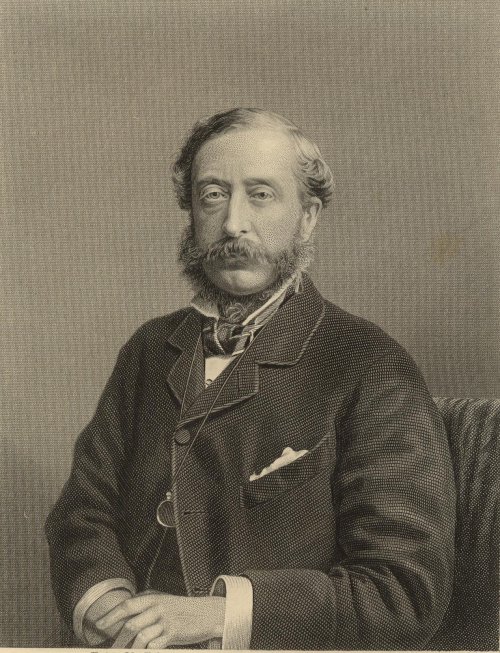
The Rt. Hon. Henry Howard Molyneux Herbert 4th Earl of Carnarvon
IMAGE LINKED: wikimedia Attribution 4.0 International (CC BY 4.0)
Pro Grand Master Carnarvon was saying that as a matter of principle, there could be neither civilisation nor Freemasonry without (i) belief in God; and (ii) belief in the immortality of the soul.
From whence did this assertion take its rise? As part of the Imperial expedient, members of indigenous ruling elites, without Christian antecedents, were initiated; for some of whom, the concept of the immortality of the soul would have been alien.
Where, in the official publications of British Freemasonry, before and since this meeting in 1877, was belief in the immortality of the soul identified as an ancient landmark, an essential prerequisite for initiation?
How was it possible for a Pro Grand Master; Eton, Oxford Classics First, the British Colonial Secretary, a widower with three children, to say, ‘la solidarite humaine’, [human solidarity] whatever that expression may mean which I hardly know how to translate’?
For quite long enough, these words had permeated European writing including those of the GOdF, more than time enough for their accommodation by British Freemasonries.
Carnarvon had resigned from Government over Disraeli’s 1867 Second Reform Act, designed to extend the franchise to working people; some of whom, it would be unreasonable to doubt, were Freemasons!
Perhaps implicitly from the formation of the GOdF in 1773, but certainly from 1865, the paths of British Freemasonries and those of the GOdF were unlikely to ever meet; it was only a matter of time before they crossed!
Oversea relations were not based on sentiment:
‘We have no permanent friends. We have no permanent enemies. We just have permanent interests.’ – Benjamin Disraeli (Prime Minister of the United Kingdom 1874-1880) .
This might not sound Masonic, but it guided the leadership of British Freemasonries.
Freemasonry in the republican USA was even more Christian-based than in Britain; introduced in 1864, USA coinage carried the mantra ‘In God We Trust’.
In light of this, Carnarvon’s narrow equivalation of republicanism and atheism does not appear convincing and is not good Calvinism.
Threat to the whole of civilisation notwithstanding; the action of the GOdF was perceived as a fundamental threat to the principles of faith-based Freemasonry; seemingly there was no other type, something had to be done!
Carnarvon:
‘…. the course which I recommend to Grand Lodge is that a committee be appointed…. that they should enquire into the facts of the case; that they should then search all those ancient records…. obtain explanations of anything which may now be in doubt and …. report to Grand Lodge the course which they recommend.’
The eleven-strong Committee included Aeneas J. McIntyre QC, Grand Registrar. (See Parts 2 and 3.)
If that wasn’t enough for one night, consideration of ‘The German Question’ was to follow!
The view must be taken that, prior to the meeting, consultation had been undertaken with the Grand Master, The Prince of Wales, and that decisions had already been made on both the French issue and the German Question.
It was necessary to construct a narrative which, convincingly, would enable the exclusion of the GOdF yet maintain fraternity with Germany.
That is to say, to interfere with the rights of one jurisdiction but not with another, yet purport ‘a certain sound’.
Part 2 to follow. German Fidelity: ‘For if the trumpet gives an uncertain sound, who shall prepare himself to the battle’?
Article by: Gerald Reilly

Gerald Reilly was initiated in 1995 into St Osyth's Priory Lodge 2063. Essex. England (UGLE).
He was a founder member of Josh Heller's Allthingsmasonic, and with Josh co-wrote 'The Temple that Never Sleeps' (Cornerstone Books, 2006) he is committed to the development of e-Freemasonry.
Awarded the Norman B Spencer Prize, 2016.
Book: by Gerald Reilly

The Temple That Never Sleeps
by Josh Heller and Gerald Reilly
Freemasons and E-Masonry Toward a New Paradigm
A revolutionary book for every Freemason.The two authors, American and UK Masons, present a radical view of Freemasonry for both today and tomorrow.
In addition to their ideas are those of numerous Internet Masons (E-Masons) from around the world who, by sharing the experience of their own Masonic journey, have provided stunning personal insight into the viability of the Craft in the Internet Age.
This book will challenge your understanding of Freemasonry today and how it might transform for future generations.
Recent Articles: by Gerald Reilly
 How can the allegory of the Tower of Babel teach us tolerance? Language can be a divide. Not confusion among languages but rather within language, a seriously unclear understanding of another’s world-view. We assume it is so different from our own and yet with clarity, a realisation there is more which unites than separates. |
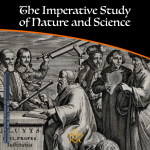 The Imperative Study of Nature and Science At some stage during Freemasonry's Second Degree, the candidate is advised that there is now permitted, something like, the extension of their research into the hidden mysteries of nature and science. Such is an excellent permission and one that each and every Freemason should pursue with awe and passion. |
 Pure Ancient Masonry; P4. A Companion in Rule, Building a better world P4. A Companion in Rule, Building a better world - The four parts of Pure Antient Masonry comprise the ‘body’ Masonic; they are the building blocks of the vital relevance, through enhanced citizenship, wherein the soul of Freemasonry abides. |
 Pure Ancient Masonry; P3. The Master, Building Better Character Part 3: The Master, Building Better Character - Being raised is a transition from knowledge to wisdom. |
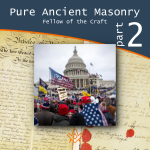 Pure Ancient Masonry; P2. A Fellow of the Craft Part 2: A Fellow of the Craft, Building Better Knowledge. Pure Antient Masonry consists of four parts. ‘Building the Temple’ is the fundamental Masonic allegory for building better people; this must be understood as a seamless whole: |
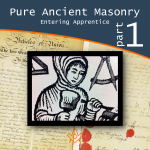 Pure Ancient Masonry; P1. An Entering Apprentice Part 1. An entering apprentice: Building Better Communities; Pure Antient Masonry consists of four parts. ‘Building the Temple’ is the fundamental Masonic allegory for building better people to build a better world |
 Pure Ancient Masonry; Intrduction This series will consider the defining characteristics, lessons and benefits of Three Degrees, the Order of the Royal Arch and when conjoined, Pure Ancient Masonry. |
 The Christianising of British Freemasonries - P4 This concluding article in the series considers the separation of British freemasonries from the Grand Orient of France (GOdF) and maintaining fraternity with the Prussian Grand Lodge of the Three Globes. |
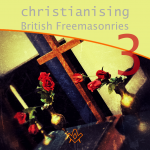 The Christianising of British Freemasonries - P3 Discover the battle for the 'soul' of Masonry. Part 3. French Perdition: ‘…for what fellowship hath righteousness with unrighteousness’? |
 The Royal Arch – ‘the fourth step in regular Freemasonry’ United Grand Lodge of England, has now designated the Royal Arch, the fourth step in regular Freemasonry, it therefore must be concluded that…publications…should now be revised, and based on attracting to the benefits of the four steps. |
 The Christianising of British Freemasonries - P2 How might the battle for the souls of Freemasonries be identified in a way that ensures thriving in the 21st Century? There is no guarantee of the immortality of the soul of Freemasonry! ‘We study the past in order to free ourselves from it.’ (Hariri) |
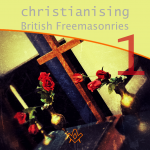 The Christianising of British Freemasonries - P1 This four-part series considers: 1. the separation of British Freemasonries from the Grand Orient of France (GOdF); and, 2. maintaining fraternity with the Prussian Grand Lodge of the Three Globes. |
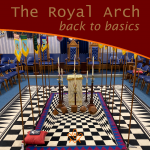 The Royal Arch - Back to Basics In the Royal Arch ceremony, the sojourners are buried with their tools in a vault. The sun, at its highest, provides enlightenment and the principal sojourner is returned to the former companions of his toil |
 The Holy Land and the Holy Sites P4 Fourth instalment of the four-part series, considers ‘masonic’ aspiration and activity regarding the Holy Land and The Holy Sites |
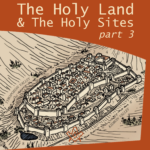 The Holy Land and The Holy Sites P3 Third instalment of the four-part series, considers ‘masonic’ aspiration and activity regarding the Holy Land and The Holy Sites |
 The Holy Land and The Holy Sites P2 The four-part series will consider ‘masonic’ aspiration and activity regarding the Holy Land and The Holy Sites |
 The Holy Land and The Holy Sites P1 In this four-part series, we will consider ‘masonic’ aspiration and activity regarding the Holy Land and The Holy Sites |
 Science and Citizenship: Towards a 21st Century Masonic Mindset. |
 Towards a 21st Century Masonic Mindset: Part 3 ‘Freemasonries’ and the Fourth Industrial Revolution |
 Towards a 21st Century Masonic Mindset: Part 2: ‘Freemasonries’ and Religiosity. |
 Towards a 21st Century Masonic Mindset: Part 1: ‘Freemasonries’ and Governance. |
masonic knowledge
to be a better citizen of the world
share the square with two brothers

click image to open email app on mobile device


